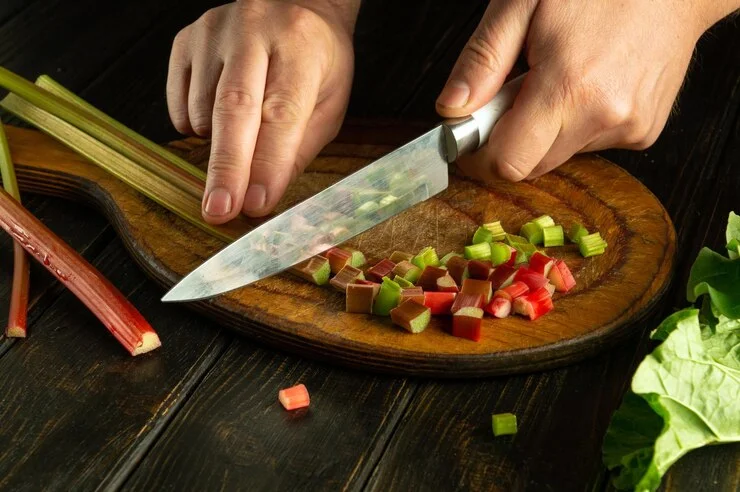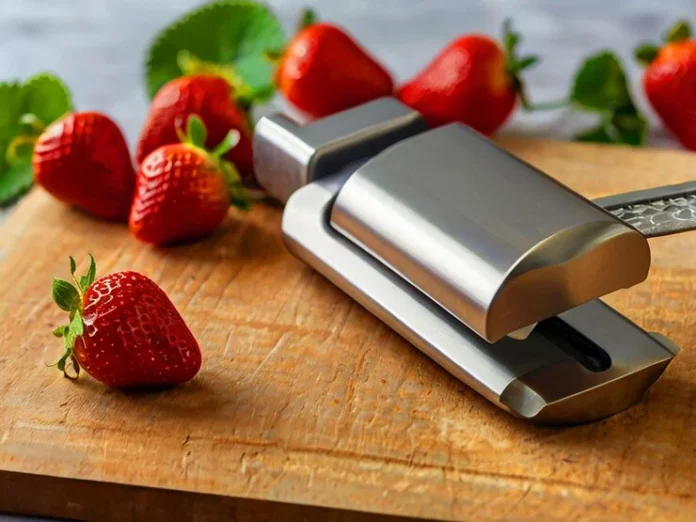Keeping your kitchen knives sharp is essential for efficient cooking and safety. A dull blade can cause accidents and make meal prep unnecessarily difficult. Therefore, finding the best knife sharpener is crucial to maintaining the quality of your knives. To that end, in this guide, we’ll walk you through everything you need to know about selecting the perfect knife sharpener for your needs. Additionally, we’ll cover the different types available and offer tips for sharpening your knives effectively.
Why You Need a Knife Sharpener?
A well-maintained knife offers smoother cuts, making kitchen tasks quicker and more enjoyable. Additionally, a sharp knife is safer than a dull one because it requires less force to slice through food, reducing the chance of slippage. Without a proper sharpener, your knives will lose their edge over time, resulting in inefficient cuts and a higher risk of injury.
Types of Knife Sharpeners
When shopping for a knife sharpener, you’ll encounter several different types. Each type has its benefits, and the best choice depends on your specific needs and knife collection.
Manual Knife Sharpener
Manual knife sharpeners are often compact, portable, and easy to use. They typically feature a V-shaped notch made of abrasive materials such as carbide or ceramic, through which you pull your knife.
Pros:
- Affordable
- Simple to use
- Good for quick touch-ups
Cons:
- May not offer precision sharpening
- Not ideal for professional or high-end knives
Electric Knife Sharpeners
Electric sharpeners use motorized abrasive wheels to sharpen knives. As a result, these models are convenient and fast, which is why they are popular for home use.
Pros:
- Easy and quick sharpening process
- Consistent results
- Suitable for various knife types
Cons:
- More expensive than manual sharpeners
- Less control over sharpening angles
- Not always suitable for specialty or delicate knives
Whetstones
Whetstones (also known as sharpening stones) offer the highest level of precision. This traditional method involves grinding the knife blade against the stone to achieve a razor-sharp edge. In addition, it requires careful technique to ensure optimal results.
Pros:
- Best for precise sharpening
- Versatile; can be used on all kinds of knives
- Ideal for high-quality knives
Cons:
- Requires skill and practice
- Time-consuming
- Can damage knives if used improperly
Honing Rods
While honing rods are not technically sharpeners, they are essential tools for maintaining the edge of your knife. They realign the blade’s edge, which extends the time between sharpenings.
Pros:
- Quick and easy maintenance
- Prevents frequent sharpening
- Inexpensive
Cons:
- Does not sharpen; only maintains the edge
- Not a replacement for actual sharpening
Factors to Consider When Buying a Knife Sharpener
Type of Knives You Own
Certain sharpeners work better with specific types of knives. If you have Japanese knives with a single bevel, for instance, you might need a specialized sharpener, such as a whetstone. For European-style knives with a double bevel, an electric or manual sharpener may suffice.
Frequency of Use
If you’re constantly using your knives, you’ll need a sharpener that can keep up with frequent sharpening sessions. In this case, an electric sharpener might be ideal due to its speed and convenience.
Sharpening Angle
Different knives require different sharpening angles. Japanese knives often have a 15-degree edge, while Western knives typically have a 20-degree edge. Choose a sharpener that can accommodate these angles for the best results.
Material of Sharpener
Sharpeners come in various abrasive materials, such as diamond, ceramic, and carbide. Diamond is the most durable and effective, while ceramic is gentler on the blade but still effective. Carbide is suitable for quick touch-ups but may wear out your knife faster.
Price
Knife sharpeners range in price from budget-friendly models to high-end professional-grade tools. While it may be tempting to go for the cheapest option, investing in a high-quality sharpener will prolong the life of your knives and ensure better results.
How to Use a Knife Sharpener Effectively?
Properly using your knife sharpener is crucial for getting the best edge on your blade and additionally ensuring the longevity of your knives.
Step 1: Clean Your Knife
Before sharpening, always clean your knife to remove any dirt or residue that could interfere with the sharpening process.
Step 2: Choose the Right Sharpener
Based on the type of knife and your sharpening needs, select the appropriate sharpener. For a quick touch-up, a honing rod might suffice, but for a complete sharpening, you may need an electric sharpener or whetstone.
Step 3: Follow the Correct Technique
Each sharpener requires a different technique. For instance, with manual sharpeners, you typically pull the knife through the slots. On the other hand, for whetstones, you’ll need to hold the knife at the correct angle and glide it across the stone.
Step 4: Test the Sharpness
Once you’ve sharpened the knife, test its sharpness by slicing through a piece of paper or a tomato. If the blade glides through effortlessly, it’s sharp. If not, you may need to repeat the sharpening process.
Maintaining Your Knife Sharpener
Just as your knives need regular maintenance, so does your sharpener. Therefore, clean your sharpener after each use to prevent the buildup of metal shavings, which can affect its performance.

- For manual and electric sharpeners, use a damp cloth to wipe down the sharpening surfaces.
- For whetstones, wash them with water and a soft brush to remove debris.
- Honing rods should also be cleaned regularly with warm water and mild soap.
Top Knife Sharpening Tips
- Use the right angle: Always sharpen your knives at the correct angle, as using the wrong angle can damage the blade or result in ineffective sharpening.
- Don’t over-sharpen: Frequent sharpening can wear down your knife’s blade. Stick to sharpening only when necessary, and use a honing rod in between sharpening.
- Invest in a quality sharpener: A high-quality sharpener will last longer and provide better results than a cheap, flimsy one.
- Practice makes perfect: If you’re using a whetstone, it may take a few tries to get the technique right. Be patient and practice until you can achieve a sharp edge consistently.
Conclusion
A good knife sharpener is an essential tool for any kitchen. Regardless of whether you choose a manual sharpener, electric model, or whetstone, the key to keeping your knives sharp and effective lies in regular maintenance and proper technique. Furthermore, by understanding the different types of sharpeners and knowing how to use them effectively, you can ensure that your knives stay sharp for years to come.




